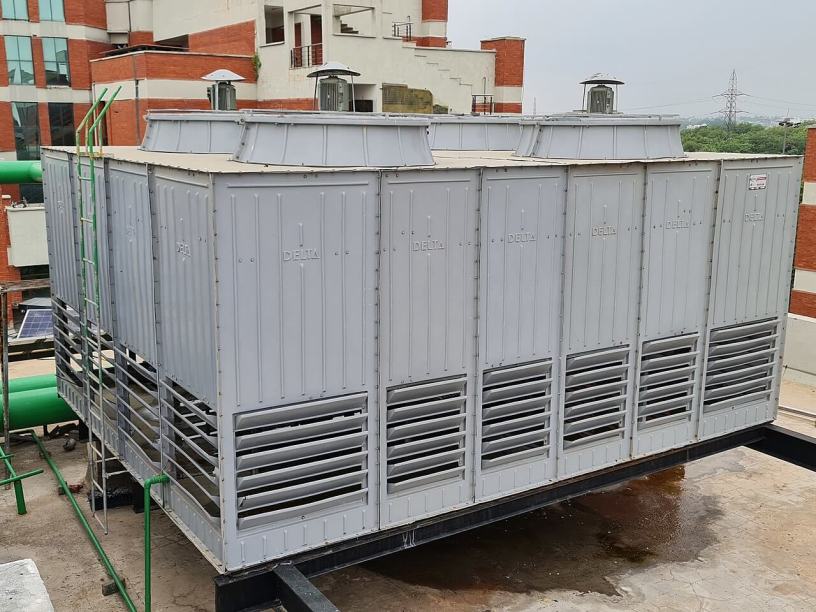A cooling tower is a device used to remove heat by dissipating it into the air using a water-based heat transfer mechanism. Similarly, an industrial cooling tower removes heat from water through evaporation of a small amount of water that is then recirculated through the device. By releasing latent heat of vaporisation, water cools as it is exposed to cooler air. When observing the buildings below from a great height, you may spot a square unit above which are fans. You’re looking at a water cooling tower.
Poor air conditioning is a major turnoff for guests, who are unlikely to stay in a facility for very long. Conversely, places with great air conditioning make you want to come back even if merely to relax in the cool air. This is largely attributable to the constant development and improvement of commercial cooling towers.
Cooling towers that work effectively are an essential component of nearly every large commercial structure. Due to its high efficiency, cooling towers provide for superior indoor climate regulation.
Your cooling tower could use some TLC. It can be challenging to figure out how to proceed. After installation, cooling tower platforms often go forgotten until there is a problem. Unfortunately, by that moment, the damage may be too expensive to restore.
Cleaning services for HVAC systems are one example of the preventative maintenance that may keep cooling towers operating like new and save on repair costs. They can also enhance the indoor environment by cleaning the air and water.
Air conditioning systems and other heat-generating industrial operations can benefit from cooling towers, which are recirculating water systems. A proper water treatment plan is an integral part of the preventative maintenance necessary for their secure, efficient, and reliable functioning. Facility owners and managers can improve the efficiency of their cooling tower systems through a deeper understanding of how these systems work.
A cooling tower system relies on the evaporation of water to remove excess heat from a building or other facility. A cooling system consists of the cooling tower, the recirculating pump, and the heat exchanger. The first step is for water to absorb heat from a heat exchanger. Evaporation occurs as air flows past the warm water at the peak of the cooling tower.
Whenever water and air are flowing together, heat is transferred from the water to the air, increasing the temperature and humidity of the air to a maximum of one hundred percent. When this hot air is released into the atmosphere, it cools the water in the stream. After the water in the basin has cooled, it is pumped back through the heat exchanger and the process is repeated.
In order to cool a building at a lesser cost and with less energy consumption, evaporative heat-rejection systems like cooling towers are prefered over air-cooled or dry heat-rejection alternatives. The use of cooling towers rather than air-cooled heating, ventilation, and air conditioning (HVAC) or process cooling systems results in significant water and energy savings.
An air-cooled chiller of the same capacity as a water-cooled chiller can use up to 50% more power to run. The heating, ventilation, and air conditioning (HVAC), cold rooms, and industrial cooling systems of a building can achieve maximum efficiency with the help of the right software.
To maintain the most effective operation and to minimise downtime, cooling towers require periodic maintenance. Water conservation, corrosion, scaling, deposits, and microbial activity are some of the difficulties that cooling towers face.
Water that has evaporated leaves dissolved pollutants from the makeup water behind, which can accumulate and cause scale, deposits, and rust. These problems may result in water equipment failure, which would interrupt production and increase expenses and inefficiency. Professional water treatment reduces these difficulties through expert help, targeted optimisation, and industrial Best Practices.
Hopefully, this guide helped you in understanding the working of a cooling tower. Almost any large structure, heavy-usage business, or manufacturing facility will employ the use of a cooling tower. The building’s operations are greatly affected by these pricey pieces of machinery. When maintenance is neglected, both energy costs and the likelihood of damage to the building itself increase dramatically. The health of the building’s occupants may be at risk if the cooling tower is dirty.
